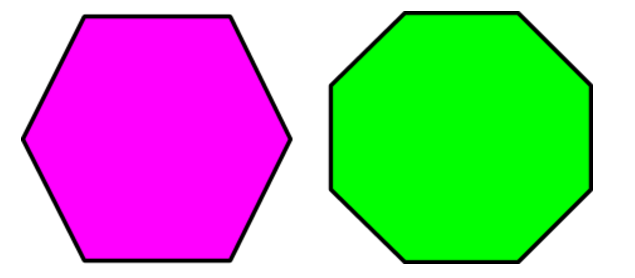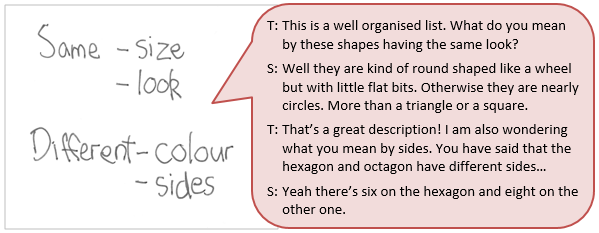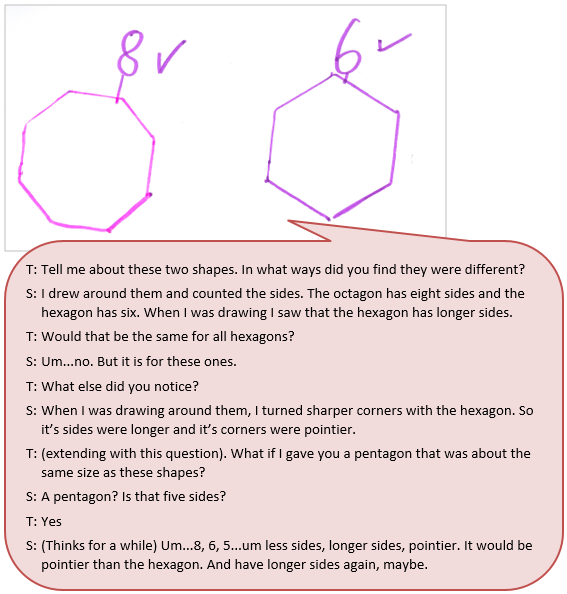The purpose of this activity is to engage students in thinking about the features and differences of regular polygons.
A printable PDF with suitable shapes is provided with this activity.
This activity assumes the students have experience in the following areas:
- Constructing polygons by drawing or joining strips.
- Naming common polygons, such as triangle, square, rectangle, hexagon, octagon.
- Describing the features of polygons (feature are perceptual characteristics such as sharpness, straightness, ability to roll, etc.).
- Identifying simple properties of polygons, such number of sides and angles.
The problem is sufficiently open ended to allow the students freedom of choice in their approach. It may be scaffolded with guidance that leads to a solution, and/or the students might be given the opportunity to solve the problem independently.
The example responses at the end of the resource give an indication of the kind of response to expect from students who approach the problem in particular ways.
Jess thinks that since hexagons and octagons look the same, they should have the same name.
Find as many ways as you can to show Jess that they are different.
Note to teacher: This activity assumes the students are supplied with regular hexagons and regular octagons of similar width and area.
The following prompts illustrate how this activity can be structured around the phases of the Mathematics Investigation Cycle.
Make sense
Introduce the problem. Allow ākonga time to read it and discuss in pairs or small groups.
- What do you think the problem is about?
- What is meant by the word “different”?
- What do you need to do?
- What will an answer to the problem look like?
- What do you already know about hexagons and octagons?
Plan approach
Discuss ideas about how to solve the problem. Emphasise that for now you want ākonga to say how they would solve the problem, not to actually solve it.
- What strategies can you use to get started?
- Do the shapes look much the same? (Global appearance). What tells you they look alike?
- Should you make a list/table of the things you know about hexagons and octagons?
- From this list how will you find differences?
Take action
Allow ākonga time to work through their strategy and find a solution to the problem.
- Have you recorded as many things as you can about the two shapes?
- What is the same about the features and properties of both shapes?
- What is different about the features and properties of both shapes?
- How can you make sure that you haven't missed anything?
- How will you convince Jess that the two shapes are different?
Convince yourself and others
Allow ākonga time to check their answers and then either have them pair share with other groups or ask for volunteers to share their solution with the class.
- What is your solution?
- How have you convinced Jess she is wrong, and the shapes are different?
- What could you find out next? Have you learned anything that will work with other shapes?
- Have you tried changing the look of the hexagon and octagon? Do the differences still happen?
Examples of work
Work sample 1
The student identifies features and properties of the prototypical hexagon and octagon. They establish the features and properties that are the same for both shapes and those that are different.
Click on the image to enlarge it. Click again to close.
Work sample 2
The student identifies differences between the prototypical hexagon and octagon. They attend to properties, namely the number of sides and the ‘sharpness’ of angles at the corners.


